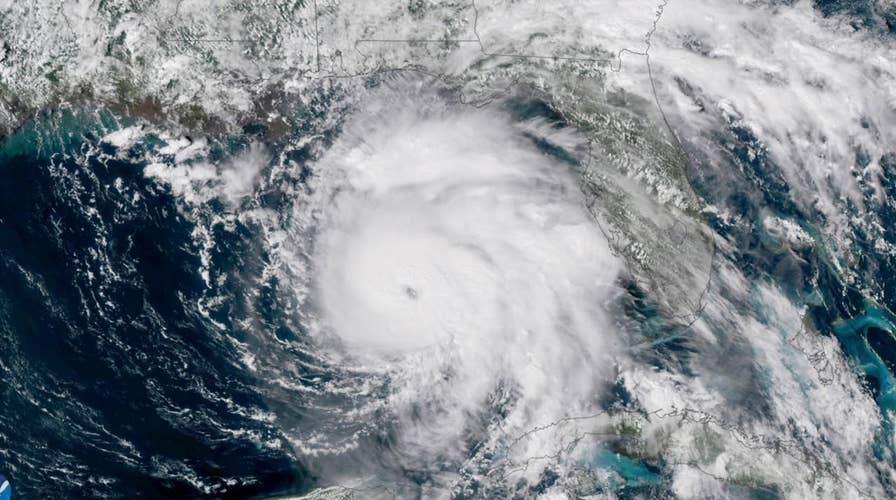2019 Atlantic Hurricane season expected to pack some punch
The United States may get hit by two to four major hurricanes before the end of the 2019 hurricane season. Forecasters are calling this year's season near normal.
Tropical Storm Barry has made landfall on the Louisiana coast, likely bringing with it torrential rain and flooding.
Barry — which was briefly upgraded from a tropical storm to a hurricane Saturday — has prompted Brock Long, a former Federal Emergency Management Agency (FEMA) administrator, to address and debunk three of the biggest myths about hurricanes.
Read on for a look at the common misconceptions.
BARRY PROMPTS STORM SURGE, FLOOD WARNINGS: WHY IS NEW ORLEANS AT AN INCREASED RISK?
Taping windows will help protect your home
False.
While Long encourages homeowners to protect windows and doors from being penetrated or damaged “at all costs,” he noted that “taping windows [does] no good.”
If the windows were to break during the storm, the tape over the glass could create bigger — potentially more dangerous — shards of glass to form.
Rather, Long recommends using plywood or hurricane shutters to protect the home. Even better, cutting plywood and drilling holes ahead of time is “the smart and prudent thing to do,” he added, as this decreases the chance of competing with others who are out purchasing the necessary supplies shortly before the storm is predicted to make landfall.
The biggest danger during a hurricane is the wind
Not so fast, says Long.
Hurricanes are categorized using the Saffir-Simpson Hurricane Wind Scale, or a “1 to 5 rating based on a hurricane's sustained wind speed,” per the National Hurricane Center, which also noted this scale estimates potential property damage.
Though strong winds can have a significant impact, “wind is responsible for much of the structural damage caused by hurricanes,” according to The Weather Channel — storm surges and rainfall-induced flooding are also major — and potentially deadly — hazards.
“This is the biggest myth. Because hurricane intensity is classified by wind, people think that’s the most dangerous hazard,” said Long.
A storm surge is the “abnormal rise in seawater level during a storm,” according to the National Ocean Service. It’s measured by how high the water reaches from the normal astronomical tide.
Storm surges accounted for about half (49 percent) of deaths from Atlantic tropical hurricanes from 1963 to 2012, per a 2014 study by the National Hurricane Center. Even more of the deaths — 90 percent — “occurred in water-related incidents, most by drowning,” the study found. Deaths by “non-tornadic” winds account between 5 and 10 percent of the fatalities.
Drowning, specifically, accounted for the majority of deaths during Hurricane Katrina — among the deadliest in U.S. history — in 2005, according to a 2008 study
It’s OK to wait to heed an evacuation order
Heeding evacuations orders sooner rather than later is the best plan of action.
“Heed warnings early; those who delay are going to be waiting along with the majority of others,” Long urged.
BARRY'S PATH: WHAT YOU NEED TO KNOW
Even better, “don’t necessarily wait for the order — if you can indicate one is coming, heed it early. In some cases, you don't have to evacuate very far,” he added. “The goal with evacuations is to get out of areas that are vulnerable to flooding and into a facility that can withstand the wind.”
You can read more about what to do during an evacuation here.
The Associated Press contributed to this report.


